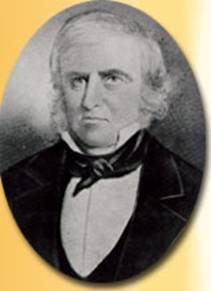Subject Guide

Mountain West
Malachite’s Big Hole
Peter Skene Ogden:
Peter Skene Ogden, born in 1794, was an experienced trapper and mountain man who
remained with the Hudson's Bay Company after its 1821 merger with the Northwest Fur
Company. In November 1824 Ogden was appointed leader of the Snake River Country
Expeditions by John McLoughlin, Chief Factor at the Vancouver Post.
who
remained with the Hudson's Bay Company after its 1821 merger with the Northwest Fur
Company. In November 1824 Ogden was appointed leader of the Snake River Country
Expeditions by John McLoughlin, Chief Factor at the Vancouver Post.
As a quasi-governmental organization, the Hudson’s Bay Company had two objectives in the lower Columbia River region. First and foremost, trapping and trading operations were managed to be profitable. Secondly, the company was to do everything possible to maintain Britain’s grip on the region and weaken any possible American claim. Ogden was instructed to continue the British policy of creating a "fur desert" between American territory and the southern Columbia River drainage to discourage American trappers from coming into the area.
In December 1824, Ogden, with a brigade of 131, including women and children, pushed south from Flathead House toward what would become Utah. Accompanying the British was a group of seven Americans under Jedediah Smith, a group whose presence Ogden found most irritating. By May 5th the expedition had reached the Bear River, where the two outfits parted company.
Ogden’s brigade had taken 3,000 beaver skins and had a successful hunt to this point. Ogden continued south along the Bear River to Cub Creek in present Cache Valley, where he learned from Snake Indians that Americans (John H. Weber's brigade of Ashley and Henry’s company) had already trapped the area. The British continued south through present-day Smithfield, Logan, Hyrum, and into the Huntsville area via Paradise Canyon. After trapping the Ogden Valley region, Ogden took his brigade across the divide south of Huntsville and established his southernmost camp near present Mountain Green. He then encountered a party of fifteen Canadians and Spaniards lead by Etienne Provost, an American working out of Santa Fe, Mexico. Soon after this, a second party of about 25 or 30 Americans, belonging to men in Ashley’s employment, rode into Ogden’s encampment.
This group was part of John Weber’s brigade, and was headed by Johnson Gardner. By this time, it must have seemed to Ogden that the country was over-run with Americans who were turning the region into a fur desert against the British. Gardner was intent on bullying Ogden and his brigade and running them out of “American Territory”. Ogden refused to be intimidated stating that “it was not determined between Great Britain and America to whom it belonged” and that until the Hudson’s Bay Company “received orders from the British Government to abandon the country” they would stay.
The discussion between Gardner and Ogden became quite heated and resulted in a large number of Ogden’s engaged trappers defecting to the Americans and taking more than 700 beaver skins with them. Ironically, both parties were not inside the disputed Oregon territory, but were well inside what was then Mexico. Ogden, fearing additional desertions and losses, and also to avoid possible diplomatic repercussions, retraced his steps, eventually returning to Fort Nez Perce.
For the next five years Ogden was engaged in trading, trapping and exploring the Snake River country from the Cascades to the Teton Range. In 1828-29 Ogden led his fifth and final of his expeditions to the interior. This expedition brought Ogden to what the Hudson’s Bay Company trappers called "Ogden's" or "Mary's" River, which was later renamed the Humbolt River by John C. Fremont.
After the Whitman Massacre in 1847, Peter Ogden would lead a small party of men to the Cayuse Indians, where he negotiated the release of the surviving captives.
Ogden's impact upon the fur trade was immense. He remained active in the Hudson's Bay Company until a few months prior to his death in 1854.
Back to the Top
Back to The Men